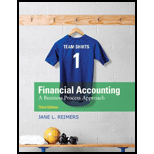
Concept explainers
Calculate cost of goods sold and ending inventory; analyze effects of each method on financial statements; apply lower-of-cost-or-market rule; calculate inventory turnover ratio.
Kami’s Pink Purses buys and then resells a special type of pink purse. Here is some information concerning Kami’s inventory activity during the month of August 2010:
August 2 860 units on hand at a total cost of $51,600
August 6 Sold 400 units at $120 per unit
August 8 Purchased 640 units at $55 per unit
August 12 Purchased 425 units at $50 per unit
August 15 Sold 600 units at $120 per unit
August 21 Purchased 300 units at $50 per unit
August 24 Sold 800 units at $115 per unit
August 31 Purchased 100 units at $45 per unit
Requirements
- 1. Calculate the value of the ending inventory and cost of goods sold, assuming the company uses a periodic inventory system and the FIFO cost flow assumption.
- 2. Calculate the value of the ending inventory and cost of goods sold, assuming the company uses a periodic inventory system and the LIFO cost flow assumption.
- 3. Calculate the value of the ending inventory and cost of goods sold, assuming the company uses a periodic inventory system and the weighted average cost flow assumption.
- 4. Which of the three methods will result in the highest cost of goods sold for August?
- 5. Which of the three methods will provide the most current ending inventory value for Kami’s
balance sheet at August 31, 2010? - 6. How would the differences between the methods affect Kami’s income statement for August and balance sheet at August 31, 2010?
- 7. Calculate the company’s inventory turnover ratio and average days in inventory for the month for each method in items (1), (2), and (3).
- 8. At the end of the month, the current replacement cost of the inventory is $32,000. Indicate at what amount the company’s inventory will be reported using the lower-of-cost-or-market rule for each method (FIFO, LIFO, and weighted average cost).
Want to see the full answer?
Check out a sample textbook solution
Chapter 5 Solutions
Financial Accounting
- General accountingarrow_forwardGeneral accountingarrow_forwardThe following data were selected from the records of Fluwars Company for the year ended December 31, current year: Balances at January 1, current year: Accounts receivable (various customers) $ 111,500 Allowance for doubtful accounts 11,200 The company sold merchandise for cash and on open account with credit terms 1/10, n/30, without a right of return. The following transactions occurred during the current year: Sold merchandise for cash, $252,000. Sold merchandise to Abbey Corp; invoice amount, $36,000. Sold merchandise to Brown Company; invoice amount, $47,600. Abbey paid the invoice in (b) within the discount period. Sold merchandise to Cavendish Inc.; invoice amount, $50,000. Collected $113,100 cash from customers for credit sales made during the year, all within the discount periods. Brown paid its account in full within the discount period. Sold merchandise to Decca Corporation; invoice amount, $42,400. Cavendish paid its account in full after the…arrow_forward
- Principles of Accounting Volume 1AccountingISBN:9781947172685Author:OpenStaxPublisher:OpenStax College
 Financial AccountingAccountingISBN:9781337272124Author:Carl Warren, James M. Reeve, Jonathan DuchacPublisher:Cengage Learning
Financial AccountingAccountingISBN:9781337272124Author:Carl Warren, James M. Reeve, Jonathan DuchacPublisher:Cengage Learning Financial Accounting: The Impact on Decision Make...AccountingISBN:9781305654174Author:Gary A. Porter, Curtis L. NortonPublisher:Cengage Learning
Financial Accounting: The Impact on Decision Make...AccountingISBN:9781305654174Author:Gary A. Porter, Curtis L. NortonPublisher:Cengage Learning  Intermediate Accounting: Reporting And AnalysisAccountingISBN:9781337788281Author:James M. Wahlen, Jefferson P. Jones, Donald PagachPublisher:Cengage Learning
Intermediate Accounting: Reporting And AnalysisAccountingISBN:9781337788281Author:James M. Wahlen, Jefferson P. Jones, Donald PagachPublisher:Cengage Learning Cornerstones of Financial AccountingAccountingISBN:9781337690881Author:Jay Rich, Jeff JonesPublisher:Cengage Learning
Cornerstones of Financial AccountingAccountingISBN:9781337690881Author:Jay Rich, Jeff JonesPublisher:Cengage Learning





